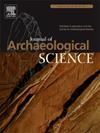回复“烧焦的蚁巢及其与中石器时代富含木炭的坑的相似之处:对豪氏等人(2024)的评论”,作者:Philippe cromb和Roger langgohr
IF 2.6
1区 地球科学
Q1 ANTHROPOLOGY
引用次数: 0
摘要
cromb本文章由计算机程序翻译,如有差异,请以英文原文为准。
Reply to “Burnt ant nests and their parallels with Mesolithic charcoal-rich pits: A comment on Huisman et al. (2024)” By Philippe Crombé and Roger Langohr
Crombé and Langohr (2025) criticize our interpretation (Huisman et al., 2024) that morphological and micromorphological differences between modern ant nest remains and Mesolithic “pit hearth“ features support an anthropogenic origin of the latter. In this response to the main points of their response, we argue that podzols were present during the Mesolithic and could be humus-cemented. Furthermore, the lack of tunnelling features in Mesolithic hearth features cannot be explained by archaeologists not digging deep enough, as such tunnels also extend laterally from an ant nest. The biological features observed in the Doel excavations do not match the morphology of ant tunnels. Moreover, the charred material we observed in a burnt nest does not match that of Mesolithic hearth features. We agree that further research on ant nests as well as on the Mesolithic features would strengthen our case, but this is difficult because of ethical and practical considerations.
求助全文
通过发布文献求助,成功后即可免费获取论文全文。
去求助
来源期刊

Journal of Archaeological Science
地学-地球科学综合
CiteScore
6.10
自引率
7.10%
发文量
112
审稿时长
49 days
期刊介绍:
The Journal of Archaeological Science is aimed at archaeologists and scientists with particular interests in advancing the development and application of scientific techniques and methodologies to all areas of archaeology. This established monthly journal publishes focus articles, original research papers and major review articles, of wide archaeological significance. The journal provides an international forum for archaeologists and scientists from widely different scientific backgrounds who share a common interest in developing and applying scientific methods to inform major debates through improving the quality and reliability of scientific information derived from archaeological research.
 求助内容:
求助内容: 应助结果提醒方式:
应助结果提醒方式:


